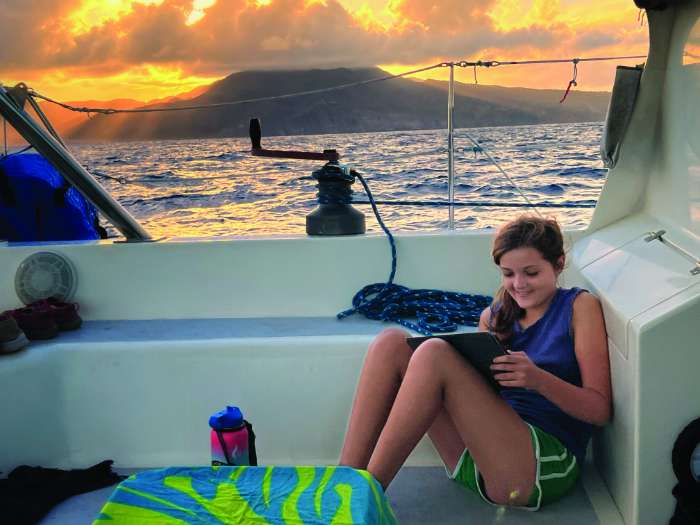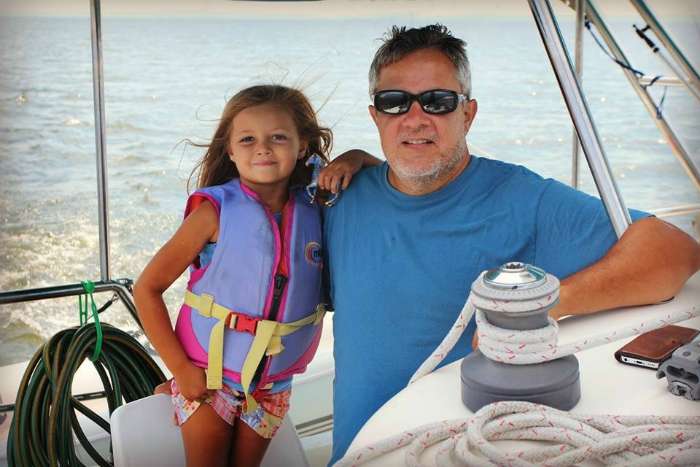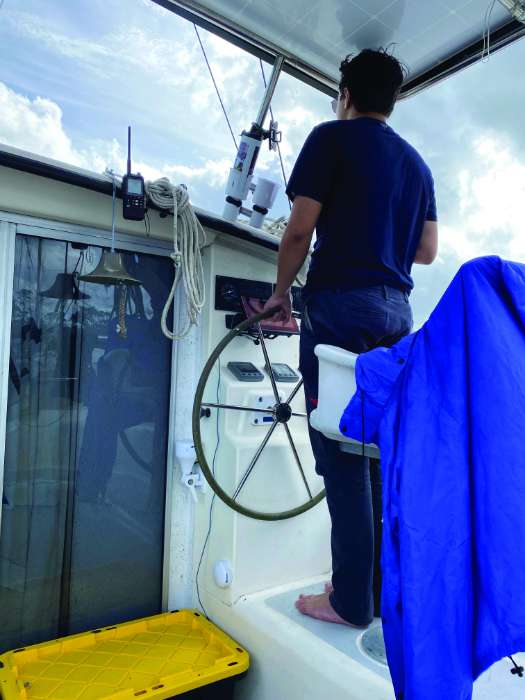Cruising Sailor Families Work To Make Passagemaking Safe and Fun for All
Sailing with your friends, significant other, or even solo is a consensual act of adventure. When you take your kids cruising, they often don’t have veto power on where to go, when to go, or whether to go at all. Sailing as a family requires careful consideration of the smaller crew to prevent mutiny.

Cozy and safe
“Safety and comfort always come first,” says Tessa Rawson from her sailboat Turas in George Town, Bahamas. The Rawson family bought their boat in Grenada last fall and are working their way up to the Chesapeake. Tessa, her husband Alex, and their three kids Roran, Annie, and Joss have been getting their first tastes of passagemaking working their way north through the Caribbean.
“Decision making is totally different when you’re doing passages with kids,” says Tessa. “I’m more cautious, and Alex is more confident. Between us we have a balance that works well for our family.”
Underway you want to make sure your kids are hydrated, eating what they can, and hopefully not getting seasick. There are medications, wristbands, ginger candies, and the one-ear-plug trick to keep seasickness away (placing an earplug in one ear only; if you’re left-handed, put it in the right ear). The key is figuring out what works for your crew and having that on hand. Kids won’t always be aware enough to monitor their own hydration, and sometimes plain water is not enough. Keep track of how much is going down, and staying down, and have electrolytes stocked.
There is no one-size-fits-all when it comes to being comfortable and having a steady stomach at sea. Some kids like to stick with a parent on watch and take an active role. Other kids prefer to curl up in the fetal position and listen to an audiobook. Both of these are okay.

Passing the time
“The worst part is when they get bored,” says Tessa. “If (the water is) flat, they can play and use their screens to pass the time. If there’s a big sea, nothing feels comfortable.”
Painting, origami, card games, singalongs, joke-telling, or fishing can all be fun when the conditions are right. On our boat Majestic, our kids have been sailing since birth, so creative ways to pass the time have evolved over the years. During the toddler years we would set up a fender as a “horsie” and let our daughter ride out the waves bouncing in the cockpit. On flat days we would let our son hoist himself up the mast to “keep a lookout” or just to hang out and read. As they got older, they would take watches, with our teen taking full night watches and letting Mom and Dad get some extra sleep.
For passages of any length, it helps to have goals for the kids to look forward to and celebrate. Keep a popsicle as a “halfway there” celebration treat. Maybe have a scorecard to mark passing boats or seabirds. Pass out a little candy for hitting a certain speed under sail, or for every 50 miles, or to celebrate each sunset at sea. We like to create music playlists for passages, or pick theme music for a watch, like this will be the disco watch.

Planning together
“The more they know, the less resistance we get,” Tessa remarks about her family passages. Early on, all of the discussion about weather windows and sail planning was just between mom and dad aboard Turas. Then, they realized that the kids were happier when they got to be a part of the planning. Now they have a daily briefing and invite the kids to look at the weather and charts with them.
“If the kids have no idea what’s happening, that makes them nervous. They tend to remember any scary moments, and you can lose their enthusiasm for the whole voyage,” remarks Tessa. “They like understanding how it all works, why we make the decisions we do, and what might happen underway. They’re much happier when they have agency in the passage.”
On Majestic, we had some planned gybes on a recent 800-mile passage. We knew after getting into the rhythm of the days, our daughter might get startled with a loud gybe. We made it a point to let her know ahead of time so that the noise or change of course wouldn’t alarm her.

One quirky lesson we learned along the way was to give the kids a heads up on what language would be spoken at our next destination. We arrived in the British Virgin Islands, and after check in we sat at a cafe and my daughter asked if she could get ice cream. I gave her some money and said, “Sure, go right ahead.”
She came back close to tears with no ice cream. I asked what was wrong, and she said, “Nobody understood me. I asked in Spanish and then in French, and they just looked at me weird.”
I smiled and said, “Did you try English?” She was incensed that we didn’t let her know we were on an English-speaking island.
If your first sail as a family doesn’t go well, don’t give up. The key to family passagemaking is to make sure the whole family gets involved however they can. And make sure nobody has access to an eyepatch and a sword.
About the Author: Cindy Wallach cruised the Caribbean with her family and two dogs aboard their St. Francis 44 catamaran Majestic, which is for sale. Learn more at majesticstfrancis44forsale.com.
Find more stories for cruising.




